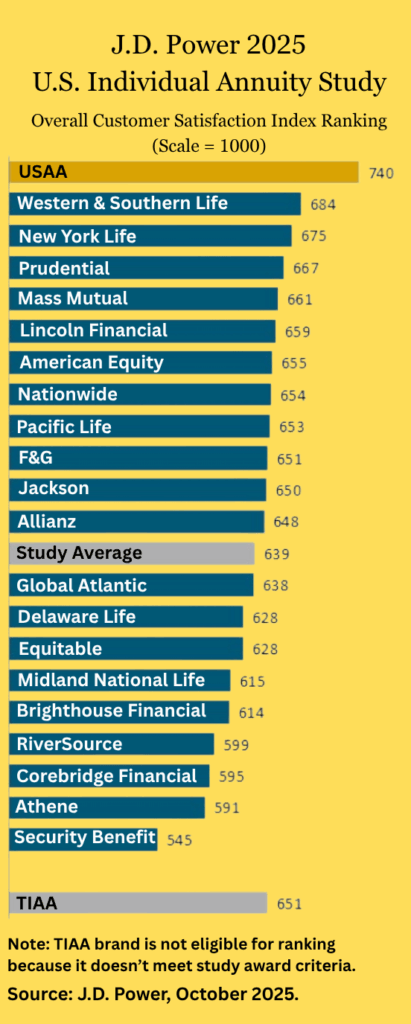“Kosher,” or “kashrus” in Hebrew, means clean or pure. It refers to food and food preparation that’s consistent with Jewish dietary laws. But kosher is also established in several languages as a synonym for legitimate, suitable, proper, and aboveboard.
Which brings us to reverse mortgages. Jack Guttentag (below right), an emeritus professor of Penn’s Wharton School and a reverse mortgage authority, has a website where he promotes relatively low-cost “kosher” reverse mortgages and warns against the non-kosher, allegedly over-priced HECMs that are advertised on television and online.
In Guttentag’s view, the growth of the reverse mortgage market is held back in large part by its lack of price transparency, which hides inefficiencies—i.e., middleman profits—that in a more competitive market would be arbitraged away. Through his website and publications, he’s led a campaign to shed light on HECM pricing.
As he and others explained to RIJ, a kosher reverse mortgage lender will share some of profit that he or she makes when selling the loan on the secondary market with the end client by reducing or waiving the origination fee, which HUD caps at the greater of $2,500 or 2% of the first $200,000, plus 1% of the amount more than that, up to a maximum of $6,000.
A non-kosher lender, he says, will charge the highest possible origination fee and keep the “mark up” or profit on the resale of the loan. If the lender’s costs are high—from employing hundreds of call center employees and buying ads on TV and the Internet—those higher profits help cover the costs.
“The lenders on my site will offer rebates, but a firm like AAG [American Advisors Group, the largest HECM company, with a 25% market share] will spend money on television commercials, so they’ll charge the maximum origination fee on every loan, on top of the higher interest rate, which lets them sell the loan balance for a higher price,” said the 92-year-old Guttentag, who is known online as “the Mortgage Professor.”
Not surprisingly, the leader of the HECM lender’s advocacy group differs. “I don’t agree with a lot of things that Jack says,” said Peter Bell, the executive director of the National Reverse Mortgage Lenders Association. “He’s made a lot of comments about calculators. I think his comments have been way off base. I don’t know anyone who is charging the full origination fee. Most are in $2,500 range. I see very few instances where people are paying the full amount.”
Less-than-transparent pricing isn’t solely responsible for the state of the HECM market, in Guttentag’s opinion. “The market ought to be ten times larger than it is,” he told RIJ. “It’s small because you’re dealing with the elderly, because their home is their most prized possession, and because the instrument is complex. All of these factors generate anxiety.
“To top it off, the press has been pretty negative for reasons that are hard to understand. That has begun to change, fortunately, because the need is growing by leaps and bounds.” While three million homeowners reached age 65 in 2015, he estimates, only about 60,000 HECM loans were written. For a list of HECM lenders, click here.
Caveat emptor
Unless the borrower, or the borrower’s financial advisor, does the proper homework, and finds a mortgage broker with better pricing, they run the risk of paying many thousands of dollars more for their loans than they should. (Even when they do shop around, they discover that cost of a fixed-rate reverse mortgage—the kind that appeals to consumers but pose risks to HECM lenders—offer only about half the payout of a variable or an adjustable rate reverse mortgage.)
In short, a buyer-beware ethical standard prevails in the HECM world. It naturally breeds mistrust among the sophisticated, and it persists even though the lenders are insured against loss by government guarantees. Because seniors don’t know exactly who to trust in the HECM market, many avoid the category entirely.
“What Guttentag said is true. Pricing in reverse mortgages is extremely opaque,” concedes Shelly Giordano, author of the 2015 book, What’s The Deal with Reverse Mortgages? “That’s why people have to get proposals from several brokers or banks and then try to get them to drop their prices. There’s no substitute for doing your homework. If you just call one [lender] they’ll hit you with everything they can. It’s just human nature.”
Another prominent participant in the HECM market, who asked not to be identified, told RIJ, “I don’t like it at all, the fact that the TV/Internet folks often quote a higher interest rate and, sometimes, the maximum HUD allowable origination fee. But I do understand why they may do it.”
Reverse mortgages “have always had a black eye [with consumers and financial advisors] because the cost to the consumer has been high,” said Cliff Auerswald of AllReverse, a 10-employee firm in Orange County, California that approves about 30 reverse mortgages per month—far less than the 1,000 mortgages that the industry leader underwrites.
“The fees have come down a bit since FHA reorganized its insurance premiums. But the atmosphere is still dominated by companies that run huge call centers and teach their reps to keep the cost up. They can do that because they are selling the most loans. AAG and others by default charge the maximum origination fees. They come down only when they find that the consumer is comparison-shopping. That’s the biggest problem.”
In an e-mail statement, AAG told RIJ:
“The cost to close a HECM loan varies upon by each individual’s situation and the specific loan they choose. During the process, we cover with them their ability to meet the financial obligations associated with the selected loan.
“Borrowers are also required to undergo independent third-party reverse mortgage loan counseling to discuss the pros and cons, process and anticipated costs associated with their loan.
“We offer competitive pricing. During the loan process, if borrowers state they received a better price from a competitor, we’ll review the competitor quote with them and the loan option selected. Closing costs are an included part of the conversation.
“We’re the leader in reverse mortgage lending by over two times the volume, and the reason why is based on our best efforts to ensure borrowers are informed about how home equity can help supplement their retirement income.
“We firmly believe that without the level of investment we make to build awareness about the product, fewer seniors would understand about HECM loans and the market would be smaller than it is today.”

Kosher mortgage math
At AllReverse, Auerswald applies part of his profit on the sale of a HECM on the secondary market to the origination fee and closing costs. He described a hypothetical kosher adjustable-rate reverse mortgage loan. “Let’s say the client was born in 1940 and had a home worth $500,000,” he told RIJ. If the house had no existing mortgage, that 76-year-old could borrow up to $306,000. Up to $181,000 would be available at closing. The rest would be available 12 months after closing. (A younger borrower would not be able to borrow as much because he or she would have more years of life expectancy and, consequently, a more distant payoff date).
The mortgage insurance premium (MIP) would be 0.5% the loan amount ($950) if the borrower took no more than $181,000 at closing. If the borrower took more—if he or she needed to pay off a $200,000 existing mortgage, for instance—the MIP would be rise to 2.5%, or $4,750. If the client wanted a fixed-rate HECM, he or she could probably borrow only about $150,000 against a paid-off $500,000 home. That’s because the lender would bear the risk that interest rates might go up dramatically in the future.
Under federal rules, the origination fee on a $306,000 loan could be as high as $5,060. But lenders don’t have to charge that much. If the client were opening a line of credit and “not drawing any funds,” Auerswald said, “we would be likely to charge $3,500 to originate the loan. It might cost $7,500 in total closing costs. But if you drew $50,000 at closing, we’d waive the origination fee. And if you borrowed $100,000 or more, we’d cover all costs.”
Auerswald can afford to pay the $7,500 costs himself because, depending on interest rate spreads, he can sell the borrower’s $100,000 IOU on the secondary market for well over that amount. (He didn’t wish to be quoted on the markup, which varies.) The margin exists in part, he said, because the loans are bundled into highly marketable securities and are insured by the Government National Mortgage Association, or GNMA.
“Securitization has made the pricing so favorable that almost all of the lenders could live with no origination fee,” Auerswald told RIJ. “Counselors will tell people to shop around, but it is up to the consumer to do it. “The largest HECM lenders don’t lower their prices, he added, because “they might have as many as 1,000 employees inside their call centers. Their cost per acquisition is high and that’s why they have to be costly to consumers.”
Give the complexities of the HECM, most 70-something retirees arguably face them at their peril, and need a trustworthy guide. On a large loan, a client could save $10,000 in mortgage insurance premiums by taking less than 60% of the loan value at closing, and save an additional $7,500 in origination fees and other costs by working with a “kosher” HECM lender.
“At certain interest rates,” Auerswald said, “I have customers who can save $20,000 in closing costs alone by using us.”
Referring to Guttentag’s kosher mortgage numbers, Don Graves, the president of the HECM Advisors Group in Wyncote, Pa., said, “I think Jack’s analysis of the fees of the major call center-based lenders is observable in some cases. But the vast majority of HECM funds are fair to the customer and the company.
“I have seen certain larger lenders starting with a product mix that is consistent with their costs of customer acquisition, which may involve a slightly higher interest rate as well as a higher origination fee. But the mortgage insurance premium and third party charges will not change from lender to lender. Origination fees will typically be based on secondary market factors and the interest rates of associated programs.”
NEXT: Innovations that Could Spark a Bigger HECM Market
© 2016 RIJ Publishing LLC. All rights reserved.





 One of the equity analysts asked if AEL would consider simplifying their FIA, and shifting some of the value to the client and away from the distributors and agents. “We might come up with something simpler to sell in the independent channel,” Matovina (left) said. “Right now we think the risk is too great. That’s the current view. But would the independent agents be willing to sell a lower commission product? We don’t know.”
One of the equity analysts asked if AEL would consider simplifying their FIA, and shifting some of the value to the client and away from the distributors and agents. “We might come up with something simpler to sell in the independent channel,” Matovina (left) said. “Right now we think the risk is too great. That’s the current view. But would the independent agents be willing to sell a lower commission product? We don’t know.”
